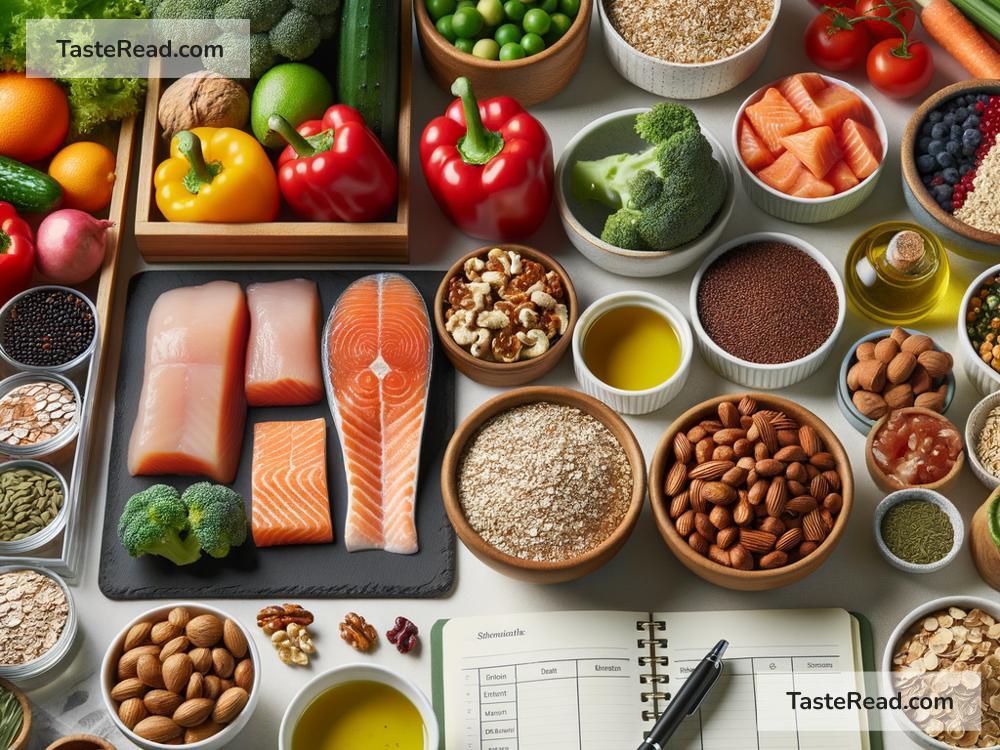How to Plan Meals for Optimal Blood Lipid Levels
Blood lipids, like cholesterol and triglycerides, are essential for your body, but when levels get out of balance, your risk of heart disease and other health problems can increase. Good news: the foods you eat can make a big difference in keeping your blood lipid levels healthy! By planning your meals wisely, you can improve your heart health and overall well-being without feeling deprived. In this blog, we’ll break down how to plan meals for optimal blood lipid levels, using clear and simple strategies.
Why Blood Lipid Levels Matter
Blood lipids are fats found in your bloodstream. These include:
1. LDL cholesterol (“bad cholesterol”): High levels can clog arteries and lead to heart disease.
2. HDL cholesterol (“good cholesterol”): Helps remove excess cholesterol from your body.
3. Triglycerides: A type of fat the body uses for energy; high levels can increase your risk of heart disease.
Keeping LDL and triglycerides low while boosting HDL is key to maintaining healthy blood lipid levels. This starts with what’s on your plate!
Step 1: Build a Heart-Healthy Foundation
Your meals should include nutrient-rich foods that support optimal blood lipid levels. Here are the essential components:
Fiber-Rich Foods
Dietary fiber, especially soluble fiber, helps lower LDL cholesterol by binding to it in your gut and removing it from your system. Include foods like:
– Oats or barley (great for breakfast!)
– Beans, lentils, and chickpeas
– Apples, oranges, and other fruits
– Vegetables like broccoli, carrots, and Brussels sprouts
Healthful Fats
Not all fats are bad! Healthy fats can help reduce LDL cholesterol and boost HDL cholesterol. Focus on these sources:
– Nuts and seeds (like almonds, walnuts, chia, and flaxseeds)
– Fatty fish (like salmon, mackerel, and sardines, which contain omega-3 fatty acids)
– Avocados
– Olive oil
Avoid saturated fats (found in fatty cuts of meat, butter, and full-fat dairy) and trans fats (commonly found in fried and processed foods). These can raise LDL cholesterol and harm your lipid profile.
Whole Grains
Replace refined grains (like white bread and pasta) with whole grains to improve fiber intake and support healthy cholesterol levels. Try foods like:
– Brown rice
– Quinoa
– Whole wheat bread or pasta
Veggies and Fruits
These are loaded with antioxidants, fiber, and nutrients that support heart health. Aim to make at least half your plate fruits and vegetables.
Step 2: Structure Balanced Meals
Building a meal isn’t just about flavor—it’s also about balance. Here’s how to put everything together:
-
Start with Fiber: Incorporate whole grains or legumes to stabilize your blood sugar and provide lasting energy. For example, pair quinoa with roasted vegetables or lentil soup with whole-grain bread.
-
Add Lean Protein: Skip fatty cuts of meat and opt for heart-friendly options like skinless chicken, turkey, fish, tofu, or beans. If you love eggs, stick to egg whites or enjoy whole eggs in moderation.
-
Include Healthy Fats: Sprinkle seeds on your oatmeal, drizzle olive oil on your salad, or enjoy a handful of nuts as a snack.
-
Pile on Veggies: Fill half your plate with vibrant, varied vegetables. They keep meals filling and are fantastic for maintaining optimal blood lipid levels.
Step 3: Master Snack Time
Snacking can make or break your blood lipid goals. Instead of chips or candy, choose nutrient-dense snacks like:
– Fresh fruit (like apple slices with almond butter)
– Raw veggies with hummus
– Homemade trail mix with nuts and seeds
– Greek yogurt with berries
These snacks not only fight hunger but also provide heart-healthy nutrients.
Step 4: Be Smart About Beverages
Drinks can contribute hidden fats and sugars. Avoid sugary drinks like soda and sweetened coffee, as excess sugar can spike triglyceride levels. Choose healthier options like:
– Water or sparkling water
– Herbal tea
– Unsweetened iced tea
If you drink alcohol, do so in moderation, as alcohol can also raise triglyceride levels.
Step 5: Use Simple Cooking Methods
How you cook your food matters just as much as what you’re eating. Frying adds unhealthy fats, so try these heart-healthy methods instead:
– Bake or roast fish, chicken, and vegetables.
– Steam veggies for maximum nutrient retention.
– Use olive oil instead of butter for sautéing.
Steer clear of processed foods and opt for homemade meals whenever possible.
Step 6: Plan Ahead
The best way to stick to a heart-healthy eating plan is to prepare meals ahead of time. Here’s how:
– Create a weekly meal plan with easy recipes to save time and stress.
– Prep ingredients ahead of time, like washing and chopping veggies or cooking grains in advance.
– Store healthy snacks in grab-and-go containers.
Meal prep ensures that you always have heart-healthy options ready, minimizing the temptation to reach for less-nutritious foods.
Final Thoughts
Improving your blood lipid levels doesn’t mean giving up delicious food—it means choosing smarter options that support your heart health. Focus on fiber, healthy fats, lean protein, whole grains, and plenty of fruits and vegetables. Pair this with simple cooking methods and thoughtful planning, and you’re well on your way to healthier meals.
Even small changes, like swapping white bread for whole wheat or snacking on nuts instead of chips, can make a big difference over time. Take it step by step, and remember: each choice you make is a step toward better health!
Start planning today for a stronger, happier heart!
Do you have favorite heart-healthy recipes or meal ideas? Share them in the comments below!


